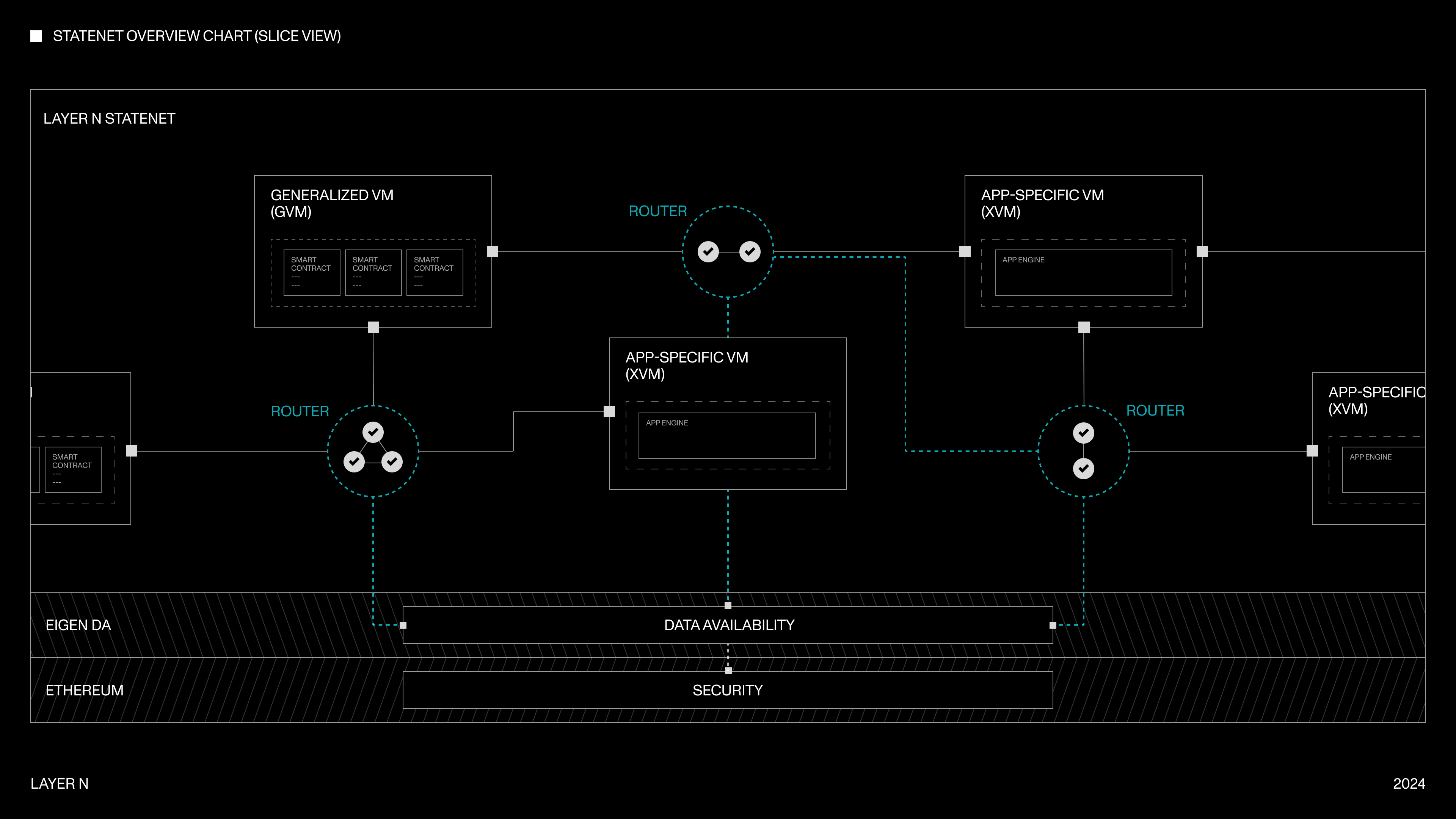XVM Overview
A virtual machine (VM) defines the execution environment, and state access rules for programs built on it. Each VM is ran on a single rollup in the Layer N StateNet, and has access to the wider network of VMs through a shared communication and liquidity layer.
There are 2 types of VMs: Generalized VMs, Application-specific VMs.

Generalized VMs
Generalized VMs (GVM) are VMs that have generalizable execution environments. These VMs enable permissionless smart contracts to be deployed within their virtual machines. The most popular GVMs that exist today include the EVM, SVM, and MoveVM.
Application-specific VMs
Application-specific VMs (XVMs) are rollups nodes with custom execution engines. These rollups run a single and specific program logic and are not open to smart contract deployment. XVMs have specified inputs and outputs, and APIs for interacting with them.
XVMs provide huge amounts of flexibility, and computational freedom for developers. XVMs enable developers to build extremely complex applications that may not be feasible to run on GVMs.